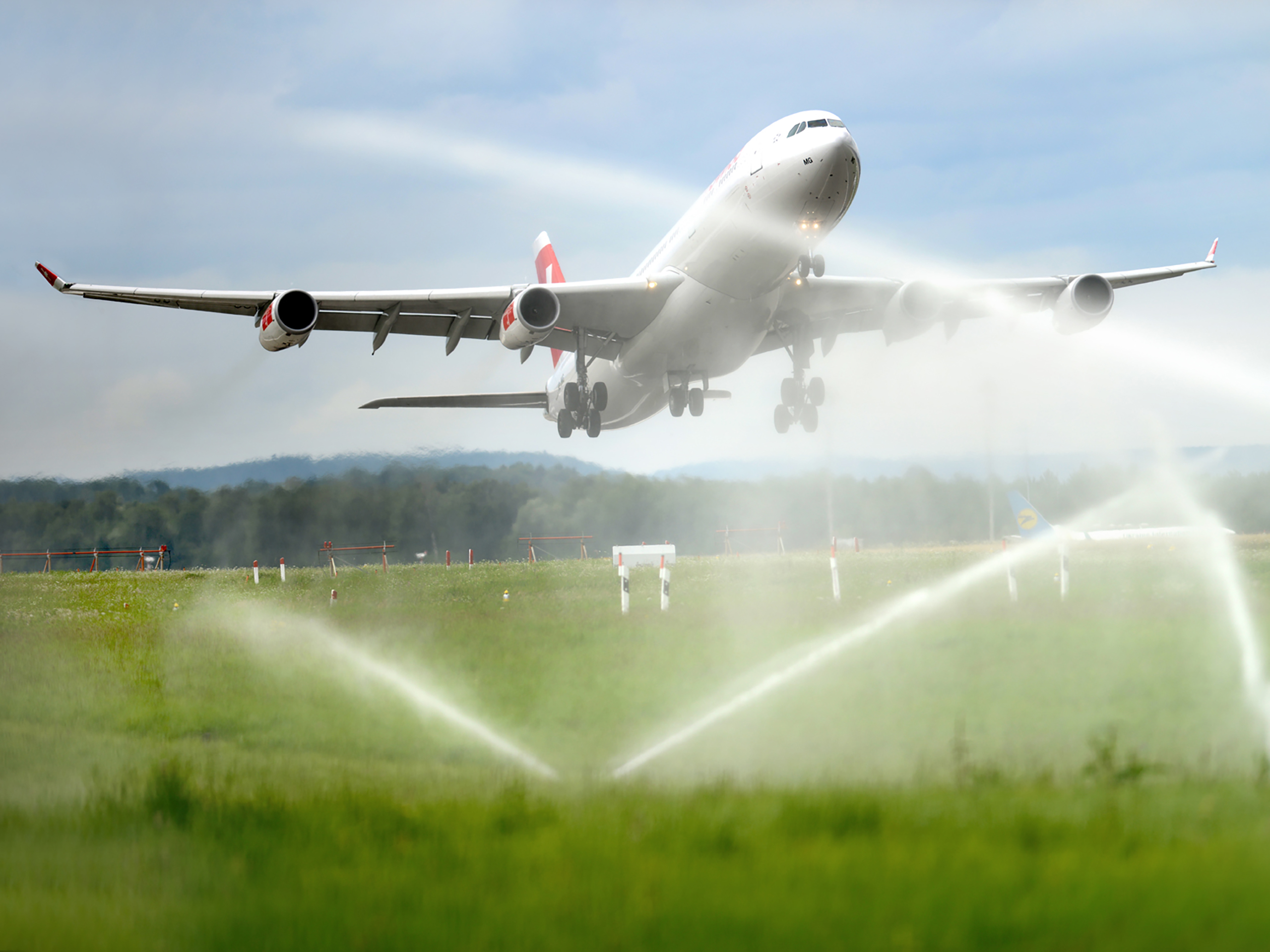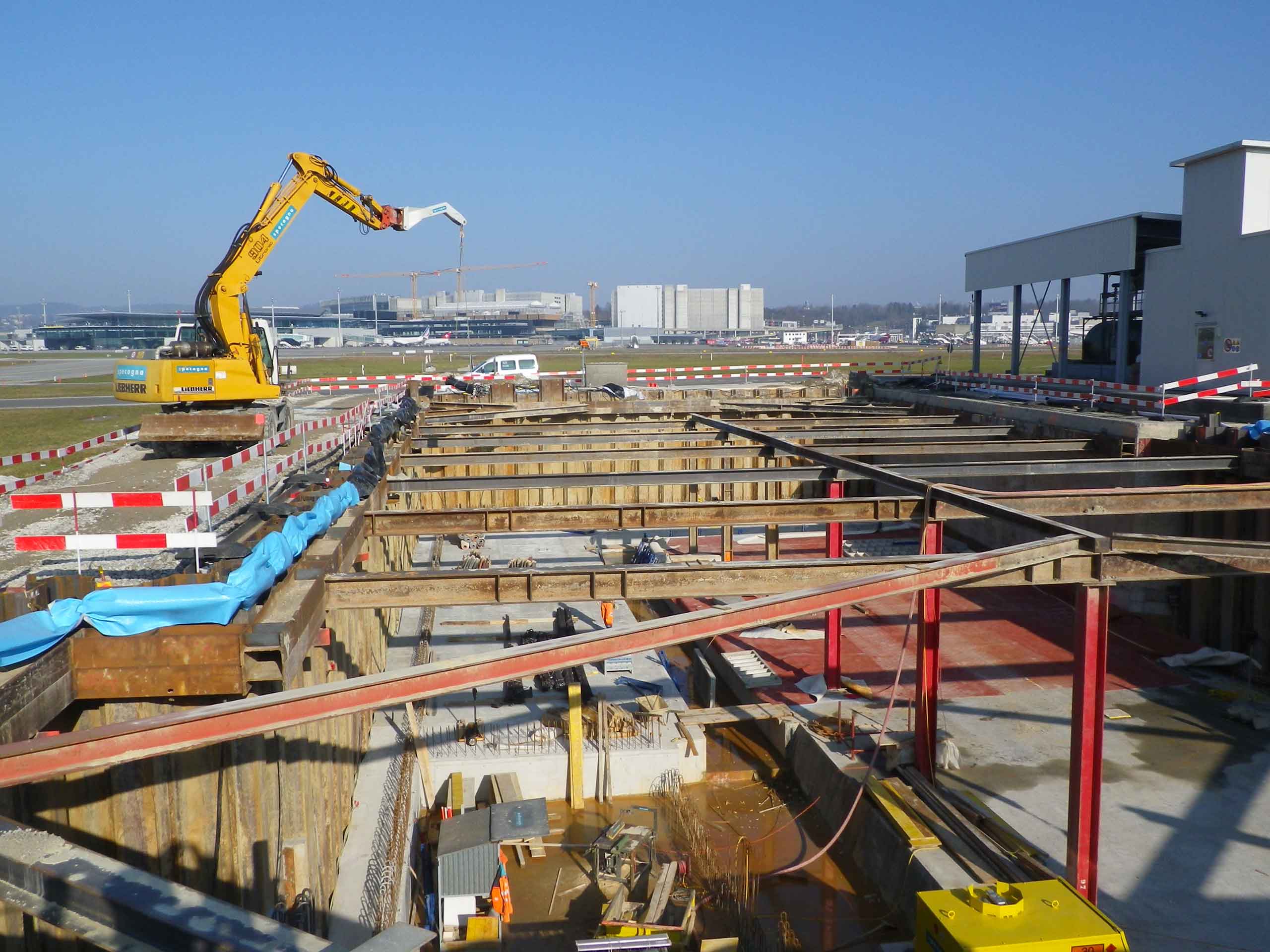Zurich Airport Ltd. has developed a globally unique concept for treating de-icer runoff.

Treat waste water from de-icing correctly
In implementing Zurich Airport's General Drainage Plan (GEP, 1995-1999), Zurich Airport Ltd. has developed a globally unique concept for treating de-icer runoff with sprinkler systems. After the implementation of the first stage as part of the 5th construction stage (2000-2004), the expansion was successfully completed in the 2014-2015 winter season following two years of construction.
A 5-year pilot phase within the first stage successfully proved that the treatment concept works. The supervisory authority then issued an operating permit for a period of 15 years. Following a review of the Zurich Airport GEP (2005-2009), Zurich Airport Ltd. committed itself to implementing the second phase and extending the treatment infrastructure. The goal of this expansion was to increase the amount of de-icer runoff treated from 75% to 95%. This includes the entire apron to the south of runway 10/28 and also runway 10/28 as the main take-off runway. This required 4'500 m3 of underground storage tanks, 25 hectares of new spray irrigation areas and a new retention filter basin.
To ensure safe flight operations, carbon-based de-icing agents (propylene glycol and potassium formate) are used for aircraft and runway de-icing. These agents are biodegradable and suitable for being processed by means of sprinkler systems. Depending on the degree of contamination, the waste water from de-icing operations is treated in one of three ways: low-contaminated waste water is channelled into retention filter basins, while medium to highly contaminated waste water is cleaned by means of sprinkler systems. Very highly contaminated waste water, which is only found on the central de-icing stands, can be pre-treated in situ and returned for recycling.

